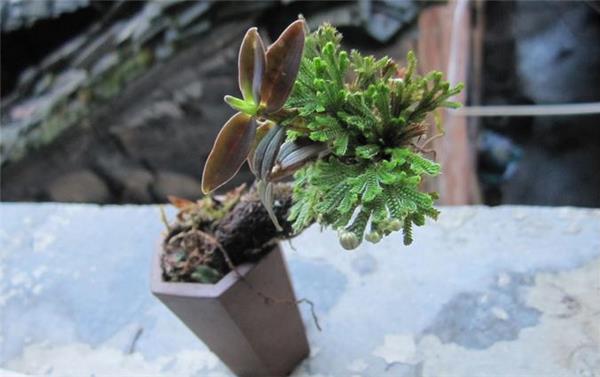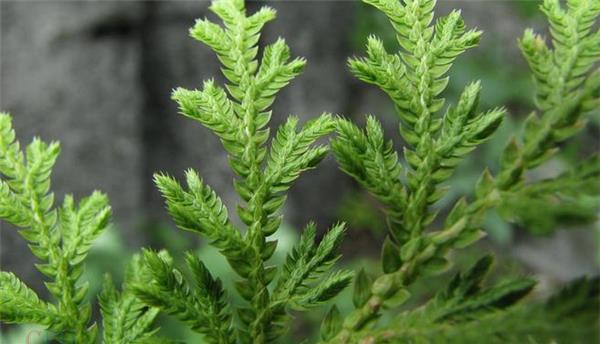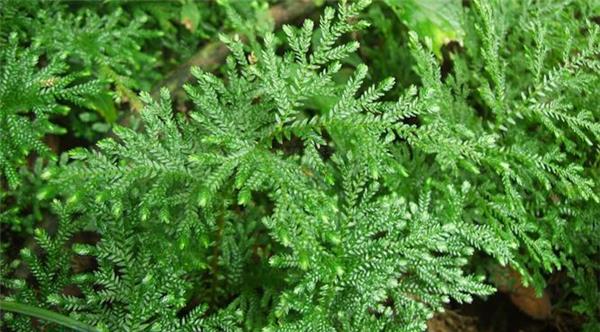[what is Selaginella officinalis is] an introduction to Selaginella officinalis
Selaginella officinalis is a lithophytic resuscitation plant, mostly on sunny hillside rocks, or in dry rock crevices. Perhaps some friends do not have a special understanding of Selaginella officinalis. Today, let's give you a brief introduction. Let's learn about it together.

What kind of plant is Selaginella officinalis
Many people want to know what kind of plant Sabina vulgaris is. In fact, Selaginella officinalis is what we commonly call reviving grass. It can separate its roots from the soil, curl up like a fist, move with the wind, thrive in the face of water, and then drill back into the soil to find water. It has extremely tenacious ability to resist drought. When the weather is dry, the twigs are rolled up and huddled together to retain moisture in the body. Once you get Rain Water, as soon as the temperature rises, the curled twigs will spread out, so it is called "reviving grass from death".
Introduction to the characteristics of Selaginella officinalis
After talking about what kind of plant Selaginella is, are we more interested in it? In fact, the mystery of this extraordinary "reviving" ability of Selaginella lies in the "improvisation" of its cells. When the drought comes, its whole body cells are in a dormant state, and their metabolism almost stops, just like death. After getting water, the whole body cells will return to normal physiological activity.
In a word, the ability to revive the grass is also forced by the environment. It grows in sunny hillsides or rock crevices, where the soil is barren and its water storage capacity is very poor, and its growth water source depends almost entirely on Rain Water, who falls from the sky. In order to survive a long drought without rain, it was forced to develop this "skill".

What are the effects of Selaginella officinalis
1. Break blood stasis, Selaginella flavour, Xingping mild temperature, Xin San Wen Tong, Qi to break blood, dissipate blood stasis to determine pain, use to treat abdominal pain, amenorrhea and dysmenorrhea and other syndrome.
two。 Promote blood circulation and stop bleeding, this product Xinwen, Xinsan Wentong, dispelling blood stasis and relieving pain, with the treatment of hematemesis, hematochezia, urine blood, fall injury and metrorrhagia and other blood syndrome.
3. Relieving cough and resolving phlegm, this taste is pungent, lukewarm, Shangnai Meridian, warming the lung and dispelling cold, relieving cough and resolving phlegm. Wind-cold evil, bundle surface invading lung, lung qi loss, loss of body fluid, cough and expectoration, white sputum, nasal congestion and runny nose, heavy throat itching, headache and fever, aversion to cold and wind, bone soreness, tongue coating thin white, pulse floating tight or floating slowly. It is appropriate to relieve wind and cold, release the lungs and nourish gold, relieve cough and resolve phlegm. This product has this effect, so it can be selected.
4. Tongjing activating collaterals, Bai Bai Xin San Wen Tong, Qi Huoxue, Tongjing Shuluo, good treatment of impotence and frown. Impotence refers to weakness of the limbs and frowns on the weakness of the lower limbs. Although it is an ancient motto to cure withering and taking Yangming alone, it is bound to have blood stasis for a long time, loss of collaterals, insensitivity, pull of muscles and veins, and even withered. Investment banks' products of invigorating qi and promoting blood circulation are wonderful to push the old into the new.

Culture methods of Selaginella officinalis
How to raise Selaginella officinalis? The cultivation of Selaginella officinalis requires a sandy loam with easy and good drainage, which should be placed in a wet and shady place without direct sunlight after planting. The spore propagation of Selaginella officinalis selected the stem segment with mature sporangium in the leaf organ, cut off the 1.5cm from the top of the branch, and placed it on the surface of clean soil with good drainage. The soil was often mixed with 1 part of soil and 4 parts of fine sand. Sprinkle some sifted fine soil on the cut of the stem, maintain the moisture of the incision, cover it with glass to prevent water loss and keep it moist, and put it at a temperature of about 20 ℃. After about 9 months, a new plant can grow.

This is the end of the introduction to Selaginella officinalis. I believe that after reading it, we will have a certain understanding of Selaginella officinalis. If you have friends who want to breed Selaginella officinalis, you can refer to the relevant knowledge I introduce to you.
Related
- Wuhan Hospital Iron Tree Blooming Result Was Instantly Frightened by the Gardener Master
- Which variety of camellia is the most fragrant and best? Which one do you like best?
- What is the small blue coat, the breeding methods and matters needing attention of the succulent plant
- Dormancy time and maintenance management of succulent plants during dormancy
- Minas succulent how to raise, Minas succulent plant pictures
- What are the varieties of winter succulent plants
- How to raise succulent plants in twelve rolls? let's take a look at some experience of breeding twelve rolls.
- Attention should be paid to water control for succulent plants during dormant period (winter and summer)
- Watering experience of twelve rolls of succulent plants
- Techniques for fertilizing succulent plants. An article will let you know how to fertilize succulent plants.



